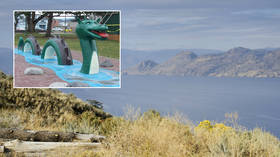Top alien-hunting scientists create cosmic compendium of every place ETs might be found

One of the world’s leading alien-hunter teams, Breakthrough Listen, has published a list of more than 700 places out there in the universe where extraterrestrials might be discovered.
The Exotica Catalog of 737 distinct astronomical objects includes every known type of celestial object, big, small and truly massive – those that scientists don't yet understand and those with which they’re already familiar.
It’s the culmination of a decade’s painstaking work to list “one of everything” out there in the cosmos, including but not limited to rocks such as asteroids, comets, and planets; stars like red giants, white dwarves and pulsars; and bigger entities the likes of galaxies, nebulae, and black holes, as well as a few smaller surprise entries.
Also on rt.com Primordial proteins could solve the mystery of life on EarthThis cosmic compendium was intended to be a handy reference guide that would assist astrobiologists and researchers in their search for extraterrestrial intelligence (SETI). It’s divided into four handy categories: prototypes (planets, galaxies, black holes), superlatives (the most extreme objects of their kind, such as extremely fast spinning pulsars), anomalies (the oddballs out there, like Boyajian’s Star, vanishing stars, etc), and controls (the remaining, largely boring stuff).
“In the future, it might also benefit students or members of the public who are trying to get a big-picture overview of astronomy or are trying to decide what to study,” said Brian Lacki, a Breakthrough Listen researcher and one of the lead authors of the paper.
Lacki admitted that the task was rather Sisyphian at times, as the constantly expanding list which included everything from hot Jupiters to mini-Neptunes, super-Earths to sub-brown dwarfs and everything in between, grew repeatedly as they discovered lesser-known, unexplained and bizarre objects scattered throughout the scientific literature.
Also on rt.com Senate committee seeks to force US government & military to DECLASSIFY all data collected on UFOsThe list also includes technological objects of a disappointingly familiar origin: various NASA probes and telescopes, weather satellites and, of course, Elon Musk’s Tesla roadster that he fired into space, for whatever reason.
The very nature of the list itself highlights the major shift in thinking behind hunt for extraterrestrial life away from radio signals, and other assorted anthropocentric forms of communication, and towards technological signatures or “Dysonian SETI,” named after Freeman Dyson.
These technological signatures might include Dyson spheres (a vast structure which contains an entire star that is theoretically used to power an entire civilization) or industrial waste, space stations, beacons and, of course, death stars.
“For decades, people have been wondering, what if [aliens are] actually machines, or do not use water, or are based on silicon or plasma or neutron star matter? Of course, that’s a common theme in science fiction, but those ideas have been spreading a bit into SETI as well,” Lacki explained.
Think your friends would be interested? Share this story!














